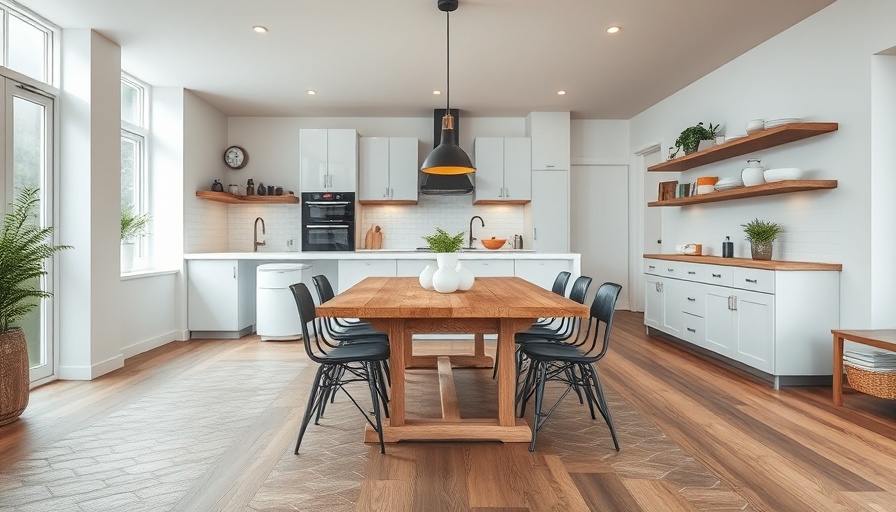
Transforming Your Home: Kitchen Tile to Wood Floor Transitions
If you're planning to remodel your kitchen, one of the critical decisions you will face is how to transition between tile and wood flooring. This decision is not merely about aesthetics; it plays a crucial role in the functionality and comfort of your kitchen. Understanding how to blend different materials can enhance the beauty of your home while providing a seamless flow between spaces. Here are some exciting ideas for achieving a cohesive transition from tile to wood floors, ensuring your kitchen is both stunning and practical.
Sleek Metal Transition Strips: A Modern Touch
One of the most popular options is using metal transition strips. These strips come in various finishes, allowing you to find one that complements both your tile and wood flooring perfectly. Not only do metal strips add a clean, modern look, but they are also practical for covering gaps between types of flooring. They work exceptionally well in kitchens where floor levels may vary, ensuring a smooth transition while enhancing your space's overall aesthetic.
Geometric Flow Patterns: Creative Customization
For the creatively inclined, customizing geometric tile patterns can offer a breathtaking transitional design. If your kitchen features tile flooring that mimics wood, consider designing a geometric flow that seamlessly blends both materials. This unique transition not only captivates the eye but also demonstrates your style and creativity. It’s best to leave enough grout space to achieve that snug fit that beautifies the finish.
Mixing Materials: A Cohesive Yet Diverse Look
Mixing wood planks with matching tiles of equal size can add depth to your kitchen flooring. This method highlights the beauty of both materials without overshadowing one another. It’s particularly effective in entryways and mudrooms, where these distinct areas can benefit from a stylish yet functional transition. Such designs often include borders that define space and create a bold statement without overwhelming the eyes.
Elevating Aesthetic with Tile Inlays
Tile inlays can create textured designs that significantly elevate your flooring aesthetic. By incorporating various shapes and colors, they provide a unique touch that can be tailored to fit any kitchen style. This contemporary trend allows you to use tiles as statement pieces in otherwise ordinary floors. Whether it's a dramatic flair or subtle elegance, tile inlays can transform the visual dynamics of your kitchen.
Why These Ideas Matter for Homeowners
As a homeowner, understanding the importance of flooring transitions can help you make informed choices that reflect your taste while enhancing functionality. Using the right techniques not only beautifies your space but also maximizes the longevity of your flooring investment. Each of these transition ideas can be tailored to various budgets and design styles, ensuring that every homeowner can achieve their dream kitchen without excess expenditure.
As you embark on your home remodeling journey, consider these flooring transition ideas to create a stunning kitchen. Implementing these creative techniques will not only elevate your home’s look but also improve its comfort and usability.
 Add Row
Add Row  Add
Add 




Write A Comment